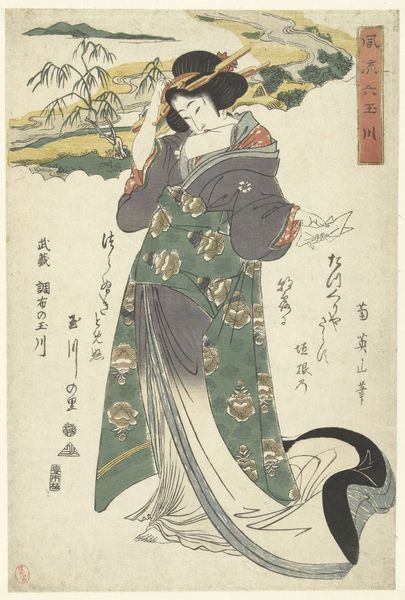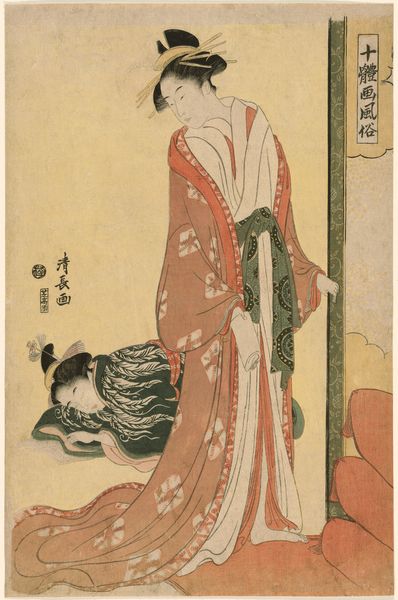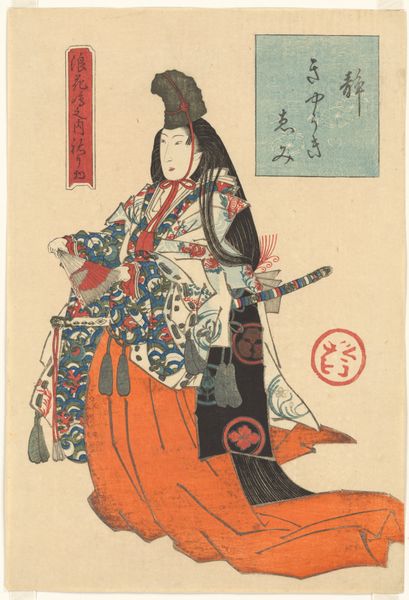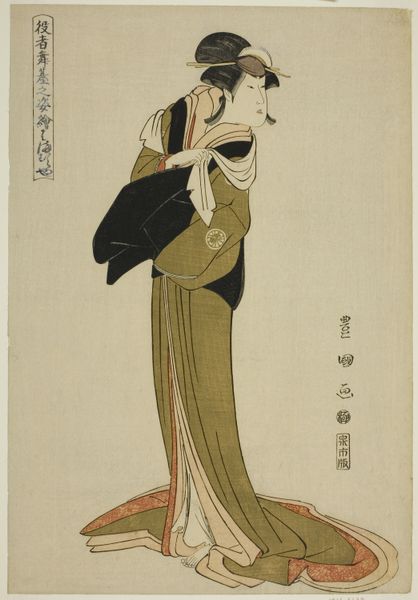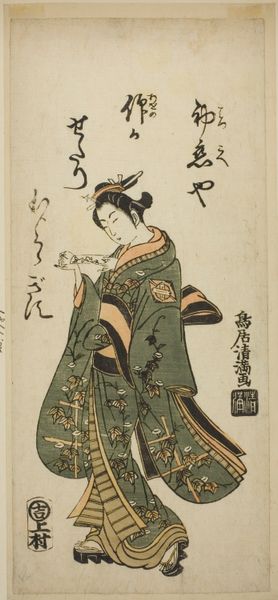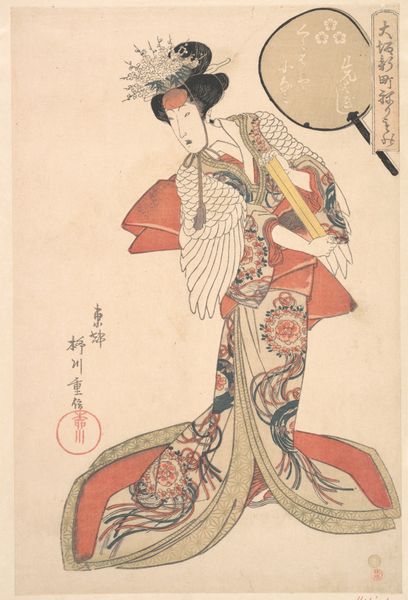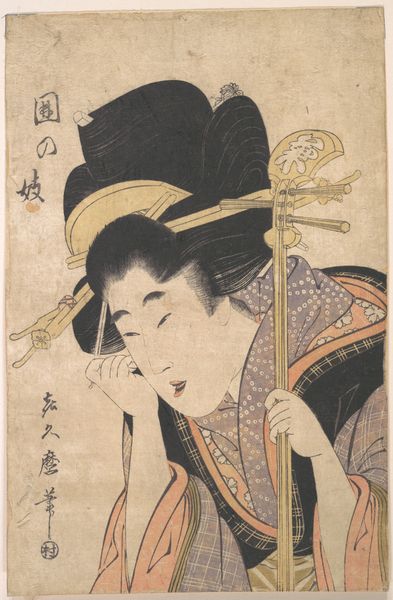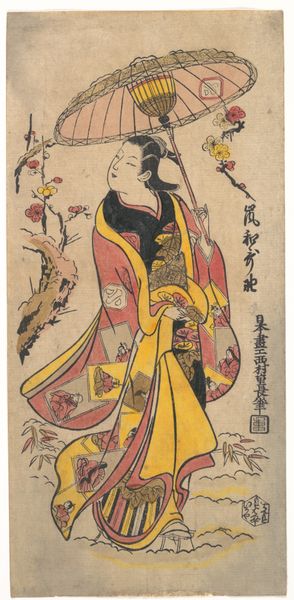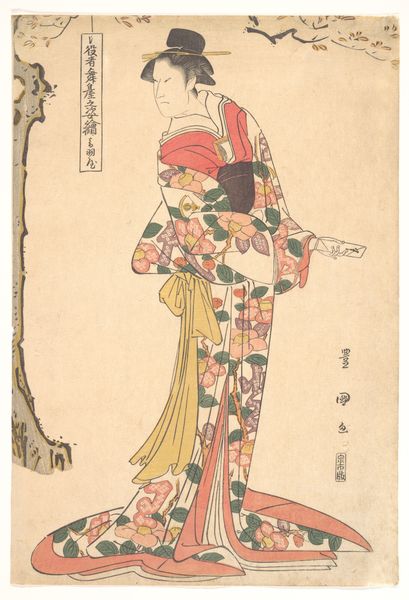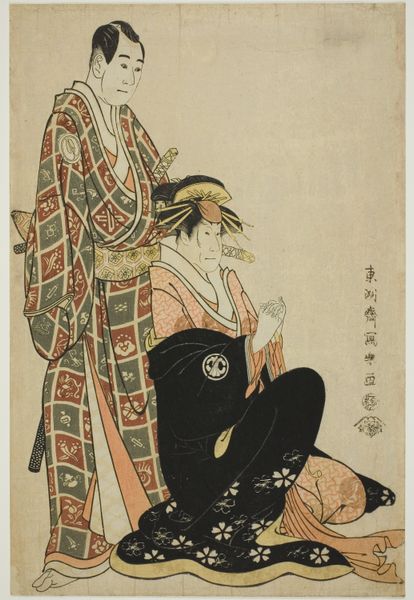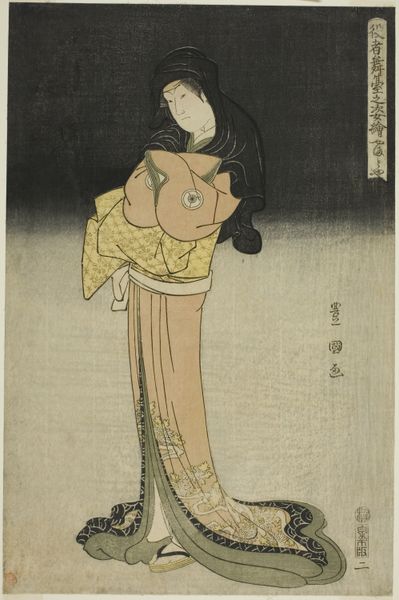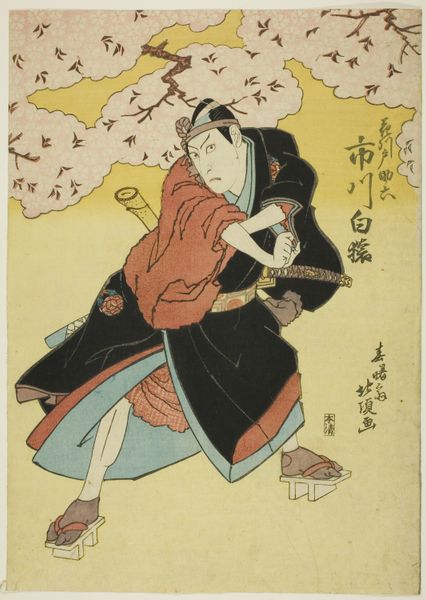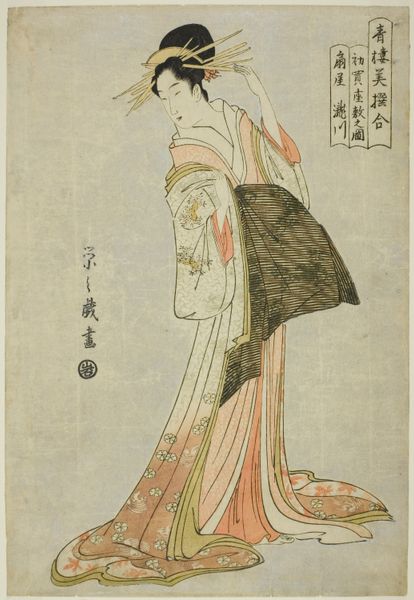
The Actor Segawa Roko as the Woodseller Ohara Leading an Ox 1800 - 1820
0:00
0:00
print, woodblock-print
# print
#
asian-art
#
landscape
#
ukiyo-e
#
figuration
#
woodblock-print
#
genre-painting
Dimensions: H. 14 1/4 in. (36.2 cm); W. 9 3/4 in. (24.8 cm)
Copyright: Public Domain
Utagawa Toyokuni I created this woodblock print of the actor Segawa Roko in Japan sometime between the late 18th and early 19th centuries. This print belongs to a genre known as *ukiyo-e*, or "pictures of the floating world", which became popular during the Edo period. These prints often depicted scenes from urban life, including portraits of Kabuki actors like Segawa Roko, who was known for playing female roles. The portrayal of actors was shaped by the theatrical culture of the time, and the *ukiyo-e* prints helped to popularize the actors and plays. The choice of depicting Segawa Roko as a woodseller leading an ox is interesting as it puts a famous actor into a working-class setting. This would have resonated with the urban merchant class who were the main consumers of these prints. Understanding the social and economic context of Edo-period Japan helps us to interpret the meaning and significance of these prints. By studying these cultural products and theatrical records, we can learn a lot about the values, tastes, and social dynamics of the time.
Comments
No comments
Be the first to comment and join the conversation on the ultimate creative platform.

